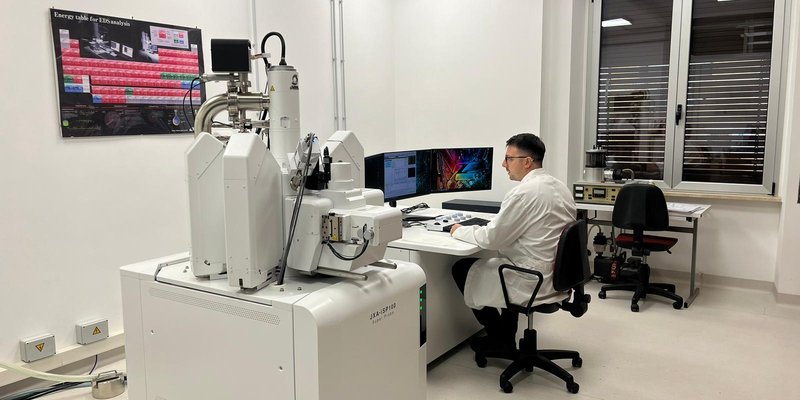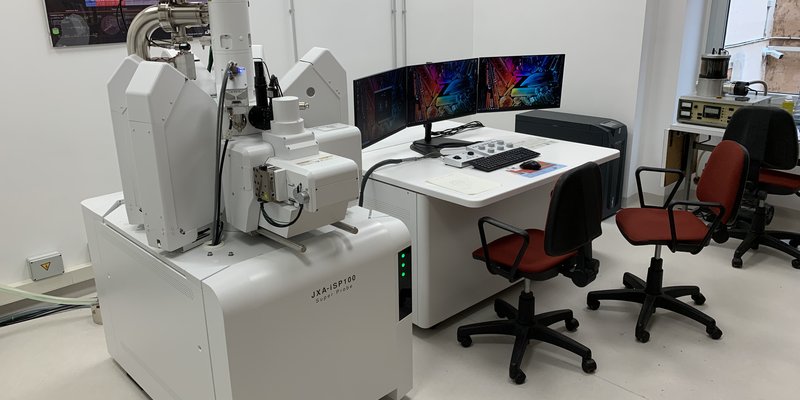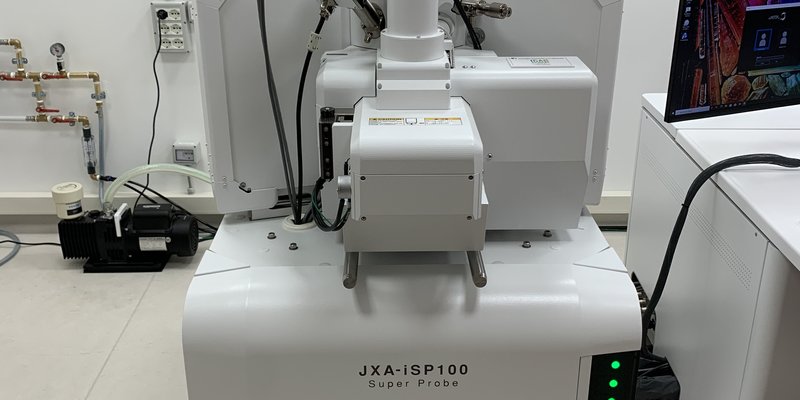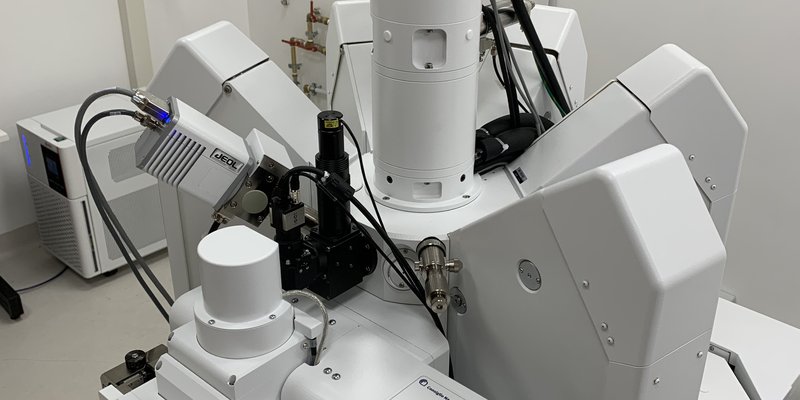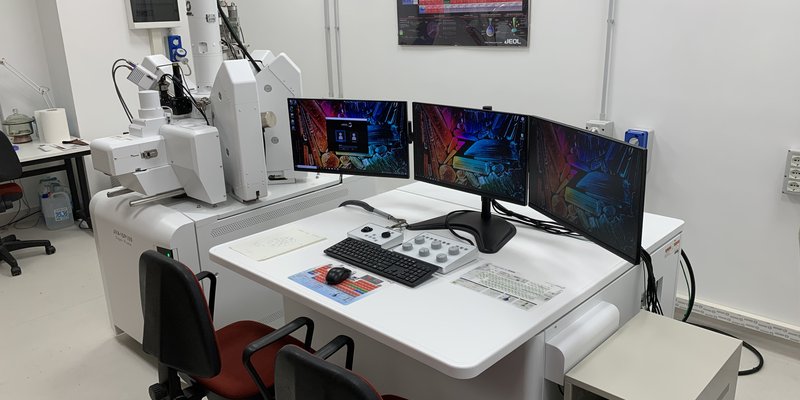The Electron Microprobe is an instrument employed for the non-destructive elemental analysis of solid samples that have been previously ground, polished, and made conductive. The analyzed materials can be of different nature and interest, from geology (minerals, volcanic glass, fossils) to archaeology (ceramics, metals, bones), environmental-technological (new materials, conductors), and medical (fibers, ashes, teeth, kidney stones etc.). The joint laboratory of CNR-IGAG and Sapienza (hosted in the Earth Sciences Department) of Microanalysis and electron Microscopy (LaM2) has recently installed the brand-new electron microprobe JEOL JXA-iSP100 Super Probe, which employs either a Tungsten (W) filament or a lanthanum hexaboride (LaB 6) crystal, and is equipped with five Wavelength Dispersion Spectrometers (WDS), of which two are equipped with Light Detection Elements analyzing crystals (LDE), and one Silicon Drift Detector Energy Dispersion Spectrometer (EDS). The WDS spectrometers layout is as follows:

and allow to quantitatively analyze the elements from B to U on minerals, volcanic glass etc. after calibration on certified Standards. Besides from elemental analysis, it is possible to acquire images of Backscattered (BSE) and Secondary (SE) electrons, and to (acquire) elemental maps measured with WDS and/or EDS (X-RAY MAP). It is possible to quickly acquire complete EDS spectra that allow to rapidly identify the main elements and obtain qualitative and semi-quantitative analysis. Finally, a digital camera mounted on the Optical Microscope (OL) with autofocus feature and connected to one of the monitors allow to observe the sample in reflected light for focusing.
An Emitech K950 is employed for carbon-coating the samples. Sample coating consists in covering the sample with a fine film of conductive material (i.e., Carbon). In microprobe analysis, the sample is carbon-coated via vaporization under high vacuum (P = 10-5 atm) by heating to incandescence a high-purity graphite rod. Coating is essential to make the sample’s surface conductive to allow mass discharging of incident electrons and avoid sample charging, which can compromise the analytical results.

